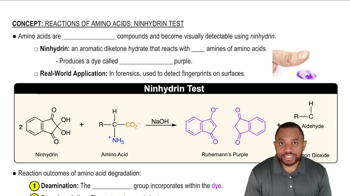Multiple Choice
Which of the following amino acids will have a net positive charge at physiological pH?
 Verified step by step guidance
Verified step by step guidance Verified video answer for a similar problem:
Verified video answer for a similar problem:



 7:17m
7:17mMaster Structural Classification with a bite sized video explanation from Johnny
Start learning